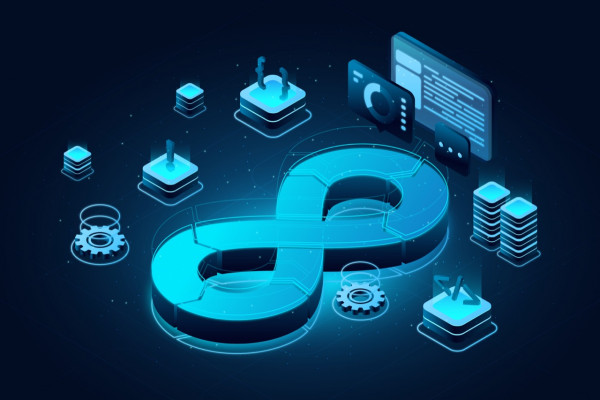Introduction
As companies throughout the globe are slowly coming out of the horrors suffered from COVID-19 in terms of movement restrictions, from employee travel to canceling events and conferences, the need for centralized integration of the world’s supply chains has become more critical than ever before. All global indicators are pointing in one direction unanimously, i.e., creating a collaborative platform that will integrate the supply chain ecosystem. This approach will connect different stakeholders, applications, and platforms mobilized throughout the supply chain to create smooth-running physical and information flow operations.
In this blog, we shall discuss,
- Key players in the supply chain ecosystem
- Competition, alliances, and cooperating competitors
- Role of platforms in integrating the supply-chain ecosystem
What is the supply chain ecosystem?
A supply chain ecosystem is a network of interlinked systems and people, such as component suppliers, raw material handlers, distributors, execution systems, process management, and assembly lines. Each element interacts with the other parts of the supply chain to form a cohesive ecosystem that shares valuable information rapidly. The process flow, communication, and quality knowledge enable the supply chain to be stronger, smarter, and faster.
Key players in the supply chain ecosystem
The international supply chain ecosystem is quite complicated. A typical supply chain ecosystem may involve numerous steps, from sourcing materials to manufacturing to shipping and then final distribution to retailers. Although every supply chain is different, there are many organizations and areas that are common to the vast majority. There are nine key players in the supply-chain ecosystem.
Manufacturer
A manufacturer is a business enterprise that sources, provides, or manufactures ingredients, parts, raw materials, finished products, or other goods. They then send what they produce to other organizations or directly to the end customer.
Intermodal Marketing Company (IMC)
They specialize in handling intermodal containers, like shipping containers. They load and unload containers between the trucks, ships, railways, and downstream supply chain organizations.
Terminal
These are locations or “hotspots” where goods are received, sent, processed, handled, or otherwise managed for onward logistics.
Non-Vessel Operating Common Carrier (NVOCC) or Freight Forwarder
These manage and organize the transportation and transfer of raw materials, ingredients, parts, and finished products from one place to another.
Transportation Provider
These move goods physically from one location or organization to another. Transportation providers own or lease the transportation infrastructure required for moving and handling goods and may be part of the integrated logistics company.
Logistics Service Provider (LSP)
These offer a variety of functions for the receiving, sending, storage, transportation, and handling of goods as they move through the supply chain.
Equipment Providers
An equipment provider produces, owns, or leases the physical infrastructure and assets required for the transportation of goods.
Supplier or Beneficial Cargo Owner (BCO)
A supplier, or beneficial cargo owner, is an importer of goods who takes ownership of the goods they receive.
Warehouse and Distribution Center
Warehouses and distribution centers house raw materials, ingredients, parts, and finished products. They are responsible for securing goods and storing them in a structured environment.
Competition, Alliances, and Co-Operating Competitors
The value web is a networked system that can synchronize the value chains of business partners in similar industries so that they can respond quickly to changes in supply and demand. For example, a large corporation is generally a collection of businesses. The information systems can boost the overall performance of these businesses by promoting core competencies and synergy.
- In synergies, the output of some business units can be used as input for other units, or two businesses can collaborate to pool their markets to reduce costs and generate revenue.
- A core competency is an activity that fosters a strategic alliance between businesses as they share knowledge and experience to gain a market advantage.
Business models based on a value web may help businesses strategically by deriving an advantage of network economics. In network economics, the marginal costs of including another participant or creating another product are minuscule, whereas the marginal gain is much larger. So, for example, if more products are listed on Amazon, the website will become more valuable to everyone as suppliers have to lower the selling price to stay competitive.
Another network-based strategy is forming a virtual company, or virtual organization, which uses networks to combine assets, people, and ideas, allowing it to create an alliance with other firms to develop and distribute products and services without being handcuffed to traditional organizational boundaries or physical locations. In a supply chain ecosystem, cooperation occurs across many industries and service providers for the final delivery of products and services.
Role of platforms in integrating the supply chain ecosystem
There are many advantages to using a collaborative platform for integrating the supply chain ecosystem.
A significant reduction in expenses and a better chance of automating most of the processes
Combining all applications into a unified SaaS (software as a service) platform guarantees businesses significant monetary savings. Apart from IT considerations, automating processes that were once time-consuming and required manual intervention enables strategic partners to reach unmatched levels of productivity.
Better communication between supply chain stakeholders
By offering continuous access to information, the collaborative platform imparts life into the supply-chain ecosystem of a firm and its collaborators (vendors, logistic providers, carriers, etc.). Efficiency and reactivity are thus more robust than before, and companies can also ensure data is handled as per prescribed norms.
Significant strategic gains
A platform-based supply chain ecosystem boosts collaboration and provides new opportunities for companies and clients to undergo their digital transformation successfully. It will allow firms to create a genuine partnership with vendors, boost working capital, and provide a top-notch customer experience by building unique services that will increase the brand’s value.
Conclusion
Integrating the supply chain ecosystem on a single platform requires a collaborative effort among key players. All should share the common goal of offering the best customer experience without reducing profits or accountability. As we all know, working as a team can net you more goals than just playing as a lone wolf.
FAQs
1. What are the different challenges affecting the integration of the Supply-Chain Ecosystem?
A. The primary challenges affecting the integration of the Supply-Chain Ecosystem are,
- The digital abyss and failure to adopt an API-first approach
- Failure to build trust and transparency with supply-chain ecosystem integration
- Underestimating the role of visibility in boosting supply chain interoperability.
2. What are digital success strategy considerations for the integration of the Supply-Chain Ecosystem?
A. The main digital success strategy considerations for the integration of the Supply-Chain ecosystem are,
- Processes
- Skills and organization
- Performance management
- Collaboration
- Technology
3. What are the key benefits of integrating the Supply-Chain ecosystem on a single platform?
A. The key benefits of integrating the Supply-Chain ecosystem on a single platform are,
- Enhanced transparency and visibility
- Real-time intelligence
- Effective collaboration
- Flexibility and agility
- Quality control
- Data centralization
- Cost savings
4. What are some of the examples of Supply-Chain ecosystem technologies?
A. Some of the examples of Supply-Chain ecosystem technologies are,
- Artificial Intelligence
- Cloud Computing
- Automated Material Handling Systems
- Computer-Aided Process Planning (CAPP)
- Computer-Aided Design (CAD)
5. Which is the most important factor driving the integration of the Supply-Chain ecosystem?
A. Customer Experience is the most important factor driving the integration of the Supply-Chain ecosystem.
6. What are the different stages of integrating the Supply-Chain ecosystem?
A. The different stages of integrating the Supply-Chain ecosystem are,
- Plan
- Source
- Make
- Deliver
- Return
7. What are three elements of integrating the Supply-Chain ecosystem?
A. The three elements of integrating the Supply-Chain ecosystem are,
- Social
- Financial
- Environmental



